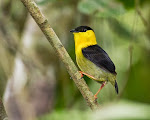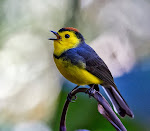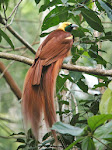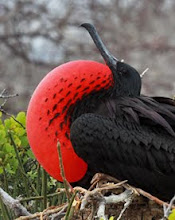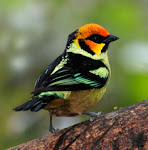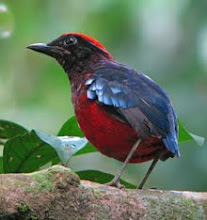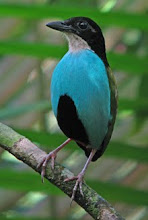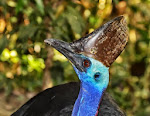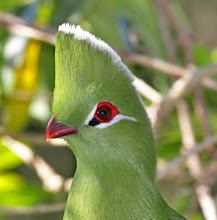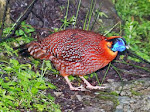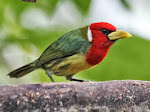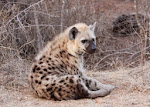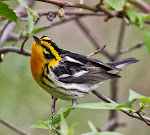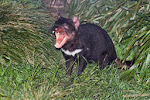
After moving on from the west of the Andes, we crossed over to the east side of the Andes, where not only the geography would be different, but the habitat, and subsequently the avian life there. A whole suite of new birds awaited myself and the group from Texas. We arrived the evening before and bedded down in the "Sacred Valley" of Vilcabamba in southern Ecuador, famed for it's high number of people aged over 100 that live there (is there something in the water? you might ask-well they think so as they have a brand called "Sacred Valley" to take full advantage of their local fame!) Our original plan had been to visit the Cajanuma sector of Podocarpus National Park, near the city of Loja. However, in the evening I got twitchy-I knew there was a high altitude hummer within reach of us, which we could NOT find at Cajanuma, but could find closer to our hotel, if only we could aquire several 4 x 4 vehicles to get up to Cerro Toledo. With the help of my co-guide for the trip, Ecuadorian Pablo Cervantes, we rustled up 3 pick-up trucks to help us with our revised plan.
An ungodly hour saw us having a similarly ungodly breakfast (not what was required for our trip into the chill of the high Andes), and then headed south, through the village of Yangana (which was still sleeping), and once we'd all moved into the pick-ups, turned west up Cerro Toledo. The road was not as rough as feared, and clearly had not experienced too much rain recently. I expected little traffic at all, along this remote road which serves merely a couple of farms, and a set of radio antennas However, after first getting out of the trucks, (and conveniently finding our only Bearded Guan of the tour), and being forced onto the road side by three consecutive vehicles I wondered what must be going on. However, the remainder of the morning we were blissfully alone, just as as masses of cloudforest and Elfin forest. Reaching the foggy and windy edge of the Elfin forest, just before it gave way to a different habitat altogether, the high Andean paramo grasslands, we jumped out, braced against the wind in our faces, and set about trying to find the bird we had ventured here for: Nebina Metaltail. This dingy bird has a small range, just covering a small area of southern Ecuador, and into Peru, where it is also local and confined to the north of the country. Unfortunately I had lost my GPS points for where I had usually seen it, and could not find the exact spot, although the habitat looked good so I pressed play on the I-Pod, at which point a hummer almost immediately appeared next to us, which turned and revealed it's red throat: NEBLINA METALTAIL! It really was that easy. Three were seen by the morning's end, along with a handful of other temperate species, although generally the road was quiet. A brief flyover Red-faced Parrot represented the rarest bird of the morning. It typically flew over low and kept quiet, so almost got past us unnoticed. A feeding flock there also yielded our first Citrine Warblers, Golden-crowned Tanagers (a real looker, decked out in deep, indigo, gold, black and rust), and a beady-eyed Black-headed Hemispingus.
After this scenic morning on the east side of the Andes we headed further south, heading as if in a beeline for Peru, although stopping just north of the town of Valladolid, at the most famous Fundacion Jocotoco reserve of all: Tapichalaca; where the infamous Jocotoco Antpitta was discovered in the 90s, and remains there today.
Next update from Tapichalaca to come soon...
















